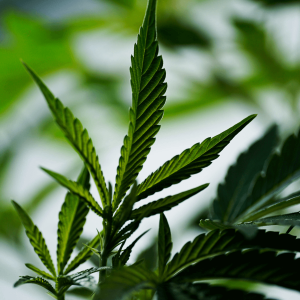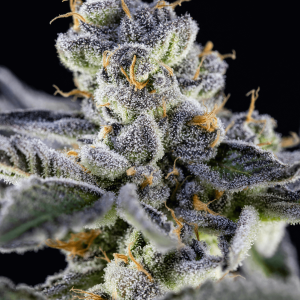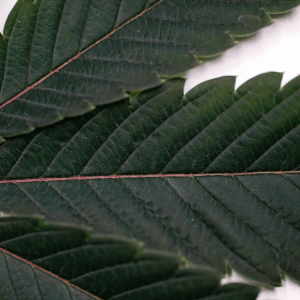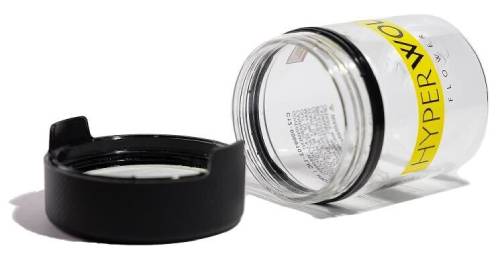Cannabis plants have a distinct, recognizable appearance, but there’s a lot more to their look than just the iconic seven-point leaf. If you’ve ever wondered what do weed plants look like beyond the memes and pop culture snapshots, you’re not alone. Whether you’re new to growing, just curious, or trying to tell if that leafy green in your backyard is actually weed, understanding cannabis plant anatomy can offer some surprisingly valuable insight.
In this guide, we’ll take a deep dive into what weed plants look like at each stage of growth, how their appearance changes between different strains, and what you should know about the various plant parts that make cannabis so unique. Let’s dig in.
Cannabis at a Glance: General Appearance
At first glance, a cannabis plant looks like a hybrid of a shrub and a flowering herb. It typically has a central stalk with multiple branches spreading out, forming a symmetrical, tree-like shape. Depending on the strain, it might grow tall and lean or short and bushy. You’ll also notice the signature leaves—serrated, finger-like extensions that radiate from a central point. While green is the dominant color, you might see hints of purple, blue, or even pink, especially in colder climates or certain cultivars.
Cannabis plants are known for their potent aroma, even before the buds fully mature. That skunky, earthy, sometimes sweet smell comes from terpenes—natural compounds secreted from the plant’s trichomes (more on those soon). If you’re around cannabis often, you’ll start recognizing these visual and aromatic cues instinctively.

Cannabis Plant Anatomy Breakdown
While the overall structure is somewhat straightforward, a closer look at cannabis reveals a complex and intentional design. The plant is made up of several key components, each playing a unique role in its health, growth, and potency:
- Roots anchor the plant and absorb water/nutrients
- Stalk serves as the main support system
- Branches carry leaves and buds
- Fan leaves help with photosynthesis
- Sugar leaves surround the buds and hold trichomes
- Buds are the flowering parts we harvest and consume
- Trichomes produce cannabinoids and terpenes
This structural layout makes the cannabis plant not only functional but beautiful in its own right. Next, let’s look at each part in more detail.
Roots and Stalk: The Foundation
The roots and stalk might not be the flashiest parts of the plant, but they are critical to everything else you see above ground. Cannabis roots grow deep into the soil (or expand in hydroponic setups) and are responsible for taking in the water and nutrients the plant needs to survive.
The stalk—the thick, central stem running up the middle of the plant—provides structural integrity. A healthy cannabis stalk is sturdy, green (sometimes with a reddish tint), and capable of supporting a lot of vertical weight. As the young cannabis plant matures, this stalk develops nodes (where leaves and branches form), allowing for lateral growth and bud production.
Fan Leaves: The Iconic Cannabis Look
Fan leaves are the most recognizable part of the cannabis plant—and likely the image you think of when someone says “weed leaf.” These large, broad leaves typically have between 5 to 9 finger-like lobes with serrated leaf margins and grow in pairs on opposite sides of the stem.
These leaves aren’t just for show. They play an essential role in photosynthesis, converting light into energy to fuel the plant’s growth. Fan leaves also offer visual cues to a plant’s health. Yellowing or curling might suggest nutrient deficiencies, light burn, or overwatering.
Different cannabis types will have distinct cannabis leaf shapes:
- Sativa strains: long, narrow fingers with a lighter green hue
- Indica strains: short, wide fingers and deeper green coloration
- Hybrids: a mix of the two, depending on the dominant genetics
Sugar Leaves: Small but Significant
Tucked within the buds are smaller, trichome-covered leaves known as sugar leaves. Unlike fan leaves, sugar leaves grow from within the flowering sites and are partially hidden by the surrounding bud.
Why “sugar” leaves? Because they often appear dusted in crystals—a frosty layer of sticky trichomes that shimmer in the light. These cannabis leaves are trimmed off during post-harvest processing but don’t go to waste. Thanks to their cannabinoid and terpene content, they’re often used to make concentrates, edibles, or pre-roll blends.
Their small size and crystal-covered surface make them an easy identifier of a maturing cannabis plant.

Branches: Cannabis Architecture
Cannabis branches extend outward from the main stalk, creating a bushy, symmetrical shape in most marijuana plants. These branches carry the weight of both fan leaves and flowering buds, which means they need to be sturdy and well-spaced.
Healthy branches are green, flexible but strong, and develop evenly across the plant. Training methods like topping, low-stress training (LST), and screen-of-green (ScrOG) can dramatically affect how the branches grow and how they ultimately appear.
Spacing between the nodes (internodal distance) also offers a clue about how the plant is developing—more on that next.
Nodes and Internodes: Growth Points
A node is the point where branches, fan leaves, or buds grow out from the stem. Between two nodes is the internode, which refers to the space separating them.
Why does this matter visually? Plants with tight internodal spacing often look more compact and bushy, while those with longer internodes stretch out more, appearing lankier and less dense. Internodal spacing is influenced by strain genetics, lighting, and environmental conditions.
Nodes are also where you can tell the difference between male cannabis plants and female cannabis plants. Male plants will produce pollen sacs at the nodes, while females will grow pistils (those tiny white hairs that eventually change color) and produce seeds.
The Buds: Where the Magic Happens
If cannabis had a crown jewel, it would be the bud. Also known as the flower or cola, the bud is where all the action is. This is the part harvested, dried, and consumed for its cannabinoid and terpene content.
Mature cannabis buds are typically dense, sticky, and aromatic. They’re covered in tiny trichomes, giving them a frosty appearance, and you’ll often notice small hairs (pistils) scattered throughout.
Bud colors range from deep green to purple, with some strains exhibiting hues of blue or even pink. Orange or amber pistils, sugary trichomes, and tight structure are all indicators of a well-developed flower.
Female plants produce the smokable buds. Males, on the other hand, create pollen sacs and are usually removed from the grow area to prevent pollination (unless you’re breeding).
Trichomes: The Crystal Coating
Trichomes are the tiny, mushroom-shaped resin glands that coat the buds, sugar leaves, and sometimes even fan leaves. Under a magnifying glass or macro lens, they look like translucent stalks with bulbous heads—and they’re what give high-quality buds that frosty, almost glittery appearance.
These microscopic structures are critical because they house the plant’s cannabinoids (like THC and CBD) and terpenes (responsible for smell and flavor).
Trichome color can also signal harvest readiness:
- Clear trichomes: immature, not ready for harvest
- Cloudy/milky: peak cannabinoid levels
- Amber: more sedative effects, slightly degraded THC
Trichomes are incredibly sticky, making them great for collecting kief or creating concentrates like hash and live resin.

Pistils and Stigmas: Colorful Hairs
Pistils are part of the cannabis flower’s reproductive system and are easy to spot thanks to their wispy, hair-like structure called stigmas. Early in the flowering stage, these stigmas are bright white and stick straight out from the calyx.
As the plant matures, these hairs change color—turning yellow, orange, red, or brown depending on the strain and timing. This color change is a key visual indicator that the plant is approaching maturity.
While pistils aren’t directly tied to potency, they help growers identify a female plant and monitor its stage in the flowering cycle.
Calyxes: The Bud’s Building Blocks
In flowering plants, the calyx is the base of each bud site. It’s a teardrop-shaped structure that holds the pistils and is often mistaken for the bud itself. When multiple calyxes group together, they form the dense structure we recognize as a cannabis flower.
Calyxes are usually green, but in some strains, they may take on purplish or reddish hues. They contain many of the trichomes and resin, contributing to both the appearance and potency of the flower.
The density and arrangement of calyxes play a big role in how appealing and effective a bud will be after harvest.
Visual Differences Between Strains
Not all cannabis plants look alike. In fact, one of the most fascinating aspects of cannabis cultivation is the vast range of appearances based on genetics. Here’s a quick breakdown of how different strain types typically look:
- Cannabis Sativa:
- Tall and lanky structure
- Long, narrow fan leaves
- Lighter green coloration
- Buds are often looser and airier
- Cannabis Indica:
- Short and bushy
- Broad, wide leaves
- Darker green hue
- Buds are dense, compact, and resin-heavy
- Hybrid:
- A mix of Sativa and Indica traits
- Appearance varies widely depending on dominance
Autoflower strains tend to be smaller and more discreet due to their genetics and quicker growth cycles.

Growth Stages: How Appearance Changes Over Time
Cannabis goes through multiple growth phases, and its appearance shifts dramatically as it matures. Here’s what you can expect during each major stage:
Seedling Stage
In cannabis seedlings, you’ll notice tiny, delicate sprouts emerge with just a few rounded baby leaves (cotyledons). The plant is fragile and small, often just a few inches tall.
Vegetative Stage
The vegetative growth stage is where the plant bulks up. You’ll see explosive, healthy growth in stalk height and branch width. Fan leaves become large and vibrant. No buds yet, but the plant looks full and healthy.
Flowering Stage
Buds start forming at the nodes, pistils emerge, and trichomes begin to appear. The aroma intensifies. Over time, buds become thicker, pistils darken, and resin production increases.
Harvest-Ready Stage
The plant looks like a fully mature, crystal-covered bush. Fan leaves may yellow as energy is directed to buds. Trichomes change color, and pistils darken. The plant is now sticky, pungent, and ready for trimming.

Final Thoughts: Seeing the Bigger Picture
Understanding what weed plants look like means more than just recognizing a green leaf with seven points. From the fan leaves to the calyxes, each part tells a story about the plant’s health, maturity, and genetic background.
Whether you’re identifying a plant in someone’s backyard, starting your own grow, or simply expanding your cannabis knowledge, knowing how to visually assess a cannabis plant can deepen your appreciation and help you make more informed decisions.
So next time you see a frosty nug or a towering stalk with wide, fingered leaves, you’ll know you’re looking at one of nature’s most complex and fascinating creations.
What Do Weed Plants Look Like: Frequently Asked Questions
1. How do you know if a plant is a weed plant?
You can usually tell a cannabis plant apart by its distinctive features—most notably, the fan leaves. Cannabis leaves typically have 5 to 9 narrow, serrated fingers that radiate from a central stem. The plant itself often grows tall and bushy with a strong, central stalk and symmetrical branches. If it’s flowering, you’ll notice sticky, aromatic buds covered in trichomes, along with thin, hair-like pistils emerging from the calyxes. The strong, skunky scent is another major giveaway. However, always confirm with a knowledgeable grower or expert before making assumptions—some plants have a similar look but aren’t cannabis.
2. What does a fully grown weed plant look like?
A fully grown weed plant is typically robust, symmetrical, and visually striking. Depending on the strain, it might stand anywhere from 2 to 10 feet tall with wide, branching arms covered in deep green (or sometimes purple-tinted) fan leaves. The buds—concentrated around the top and outer branches—are dense, sticky, and coated in glittery trichomes. You’ll also notice colorful pistils in shades of orange, red, or brown protruding from each flower. The plant often emits a strong aroma, ranging from earthy and skunky to sweet and fruity. Indicas usually appear shorter and bushier, while sativas grow tall and slender with narrower leaves.
3. What does weed look like in plant form?
In plant form, weed looks like a leafy, flowering herb with a central stalk, multiple side branches, and plenty of fan-shaped leaves. During the flowering phase, it develops dense clusters of buds that are sticky to the touch and coated in white, crystal-like trichomes. The coloration can vary—most cannabis plants are green, but some display purple, blue, or pink hues, especially under certain growing conditions. The plant becomes increasingly aromatic as it matures, and the flowers begin to swell with resin. It’s a visually rich plant with a lot of texture and fine detail when fully developed.
4. Do weed plants look different?
Yes, weed plants can look quite different depending on their strain and growth environment. Sativa plants are usually tall with long internodal spacing and narrow leaves, while Indica plants are shorter, bushier, and have broader leaves. Hybrid strains can exhibit a mix of both traits. Environmental factors like light exposure, temperature, and nutrients can also affect a plant’s size, color, and bud formation. Some strains develop purple or reddish hues, while others remain bright green. Even trichome coverage and bud shape can vary from one plant to another. So while all cannabis plants share some key features, their appearance is far from one-size-fits-all.

 Rewards
Rewards




